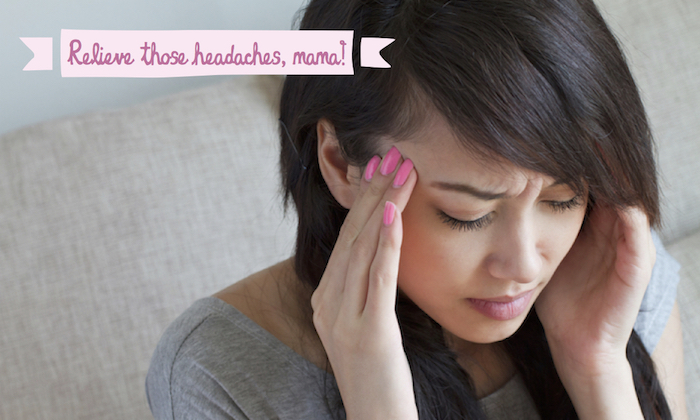




When I made the move from Toronto to Hong Kong a few years back I was convinced that my patient base would be relatively unchanged. I expected the usual neck, thoracic and low back pain cases, which of course, I did get. What I didn’t anticipate was the enormous surge in patients complaining of chronic headaches. In hindsight, I guess it shouldn’t be a surprise given the insane number of hours that Hong Kongers work in any given week. Some of my corporate clients complain of 70+ hour work weeks! There are even urban legends of investment bankers bringing their sleeping bags to the office! (and I thought that slumber parties ended after grade school).
Headaches are a lamentable byproduct of the stresses of modern life in Asia’s fastest paced city. In many cases, conventional pain medications don’t seem to resolve them. By and large the reason is because the cause of the headache is not in the head itself but rather the neck. These types of headaches are called cervicogenic, literally meaning “originating from the neck”. If there is no treatment to the cervical (neck) area, then the chance of symptom resolution is significantly reduced.
How Do Cervicogenic Headaches Occur?
There are many nerves that either arise directly from the neck or traverse it on their way up to the head. All the anatomy in the neck including the blood vessels, bones, facet joints, intervertebral discs, ligaments, muscles and meninges (lining of spinal cord) have nerves that connect them to the brain. If any of these nerves become irritated or damaged, they can relay pain information into the cranium causing a headache. How do these nerves become irritated? One of the most common ways is via direct acute trauma, for example in a car accident or a blow to the noggin. In these instances, the sudden whiplash effect to the neck causes injury to many of the pain-generating structures. The accompanying nerves light up and send pain signals up to the head which manifests as a headache. It is important to note that in the case of acute trauma, if the headache continues to worsen or there are other neurological signs such as change of behavior, dizziness, seizures, confusion, etc., immediate imaging should be done to rule out bleeding in the brain (subdural hematoma).
One of the more subtle ways that cervicogenic headaches can be induced is due to postural-related imbalances. Working hours on end at the computer with your head protruding forward places a massive amount of strain on the posterior neck muscles and spine. It is estimated that with each additional inch of forward head tilt from neutral, a further 10 lbs of stress is added to the spine. These strained muscles and ligaments can cause localised neck pain or they can aggravate the surrounding nerves.
One of the main nerves contributing to cervicogenic headaches is a nerve called the Greater Occipital Nerve (GON). It originates near the top of the neck at the level of the 2nd cervical vertebrae (C2). This nerve passes through three layers of muscle and then weaves its way up to the superficial skin at the rear of the scalp. Prolonged forward head posture can strain these muscle layers. When a muscle is strained, it tightens and shortens, squeezing the GON and causing pain to be directed to the back of the head (occipital neuralgia).
Assessing For Cervicogenic Headache
So how does a health care provider assess for a cervicogenic headache? The first step involves taking a detailed health history to rule out any red flags (signs of more serious pathologies) such as night pain, difficulty talking, sudden facial numbness or visual impairment. There are many different categories of headaches (sinus headaches, migraines etc.) and the provider will be asking specific questions to pinpoint which type the patient is suffering from.
After the history, the next step is a physical assessment. The patient is asked to move their head in different directions. The provider is looking for smooth movements and full range of motion. Patients suffering from cervicogenic headaches often have cogwheeling, limited movement patterns due to tightness or pain. Further testing includes resisted muscle testing, palpation of the cervical and scalp regions, sensory testing and even X-rays and MRI scans to uncover degenerative changes or alignment issues in the spine. Once the provider is convinced that the cause of the headache is due to a neck-related condition, the next step is to design a specific treatment plan.
Treatment Options
Traditional pharmacological methods of treatment involve anti-inflammatory drugs, muscle relaxants and analgesics. For more severe conditions, nerve blocking injections can be performed. Please consult your medical doctor about the risks and benefits of each procedure. Other forms of therapy include acupuncture, massage, physiotherapy, traditional Chinese medicine and chiropractic therapy.
As a chiropractor our training focuses on the neuromusculoskeletal system. Our approach is to try and identify, then treat the underlying cause of the condition. If the headache is due to a spasmodic muscle compressing a nerve running up to the head, a chiropractor may use a muscle release technique to help relieve pressure on that nerve. If the problem is a misalignment in the spine that’s irritating the nerves of the joints in the neck, then he/she may use a chiropractic adjustive maneuver.
Consulting with a practitioner and undergoing either chiropractic therapy or other types of treatments can help in relieving daily headaches. Remember, though, that passive treatment alone is often insufficient. Lifestyle modifications including stress management, exercise, dietary changes and postural corrections both at work and home are required for long term results.
So What Can I Do At Home?
Stress Management
It is a well know fact that high stress levels can trigger headaches. To control this, one can try various methods of relaxation including meditation, yoga or tai chi. These can all be done from the comfort of home and are all great ways to reduce stress. Fifteen minutes a day is all that’s required to start seeing long-lasting benefits. Other ways to lower stress include getting adequate sleep and organising daily tasks to prevent feeling overwhelmed. One of my colleagues swears the most effective method of stress reduction is when his cat falls asleep on his lap. Pets are amazing therapeutic critters.
Exercise
Physical exercise can release endorphins, which are our body’s natural pain killers. These can help reduce the irritation to the nerves that cause headaches. At least 30 minutes of physical activity a day is recommended to see results. Take a morning or evening stroll to get away from the chaos at home. The most effective programs involve both a weight training and cardiovascular training component. Always remember to warm-up gradually before a workout as sudden intense exercise can sometimes trigger a headache.
Dietary changes
Dehydration is a trigger for headaches so make sure you’re consuming adequate fluids. Starting the day off with a glass of water right after waking is a great idea. Limit caffeine , alchohol and sugar intake as much as possible. Replacing processed food with more fruits and vegetables is a great way to maximise antioxidant levels to combat the damaging effects of free radicals. Healthy fats should be consumed from sources such as olive oil, coconut oil, nuts and seeds. Eliminating carbohydrates completely has been known to cause headaches so make sure to consume some high quality whole grain foods daily. For those with gluten intolerance, millet, quinoa and wild rice are good alternatives.
Making these simple lifestyle modifications at home can help tremendously in relieving daily headaches. As always, if the symptoms get worse, consult a professional practitioner.
 View All
View All











 View All
View All





 View All
View All


 View All
View All













